Soil Social: Quorum Sensing, Part 1
 Print This Post
Print This Post
By Darron Gaus, NCAT Sustainable Agriculture Specialist
Sunrise is approaching. You grab your morning cup of coffee and head out to your vegetable plot. As you hold your warm mug laced between your fingers, you muse and strategize about the day’s tasks. It is that time, just at first light, that the wind is dead calm, the nightly bug chatter has ended, it is still too early for the birds to start their musical chirping, and the rooster has yet to sound the alarm. You have come to love these special few minutes of each day for their intense vacuum silence. In between sips, you hear a buzz that you haven’t heard before. It is coming from the soil beneath the tomato and squash plants. The microbiology in your soil is having a meeting.
They discuss the warmer weather and the dwindling amount of water they are starting to receive and agree that something must be done. They take a vote and reach a quorum. The entire congregation suddenly turns on a gene within themselves and signals to their neighbors to do the same. The community of microbiology is humming with this news. Quorum sensing is occurring.
The gene they elected to create are more proteins that would help create a biofilm on the leaves of the plants through a complicated, amazing, multi-staged cycle. This beautiful process exceeds the bounds of a single blog. Most simply put, the proteins created will aid in cell-to-cell adhesion so that the bacterial colony itself becomes a biofilm. The bacteria are protecting the plants that are feeding them rich, carbon-filled, sweet fuel that they strive for and grow from. This symbiotic relationship must occur to keep the plants that feed them healthy as drought approaches. The biofilm will help reduce evapotranspiration and keep some annoying pests from being able to pierce the plant leaves and rob the sugars that will make it down to the microbial neighborhood just around the plant roots, the rhizosphere. The genes to make this biofilm were always present within their population. However, there weren’t enough members to activate the work that needed to be done. But now there are. Quickly and efficiently, the signals spread throughout the vegetable plot, and you, the farmer, had the luxury to be present and hear the soil social club meeting that occurred.
This story may be an embellishment since you can’t physically hear this process occur in your soil, but it does happen in healthy soil full of biology through quorum sensing. If you have been a part of a board, community, or congregation that follows proper parliamentary procedures, then you know that to pass a vote successfully a quorum, i.e., enough present voting members to be a good representation of the membership, must be met. This is where the terminology, quorum sensing comes from in the microbiology world. A population of microbes grows until it has enough members. They can then signal certain genes to be expressed to keep the population alive and thriving, or to thwart any potential dangers.
It is important to pay attention to soil health and create a hospitable environment in order for microbiology to reach a population in which quorum sensing can occur. Following the five soil health principles (keeping the soil covered, continuous live roots in the ground, minimizing soil disturbance, increasing biodiversity, and integrating livestock) will help create the cool, moist, carbon-rich environment that most soil microbiology needs to flourish. Learning what diverse types of microbes are present, or need to be present, in your soil is especially important. This article from the USDA NRCS, by Dr. Elain Ingham, can help you get started. Also check out the ATTRA resources about soil biology and health listed below .
One key indicator of soil health is your plant roots. When a plant is unearthed, it should have soil sticking to the roots. This is called a rhizosheath. The sugars that the plant provides these beneficial microorganisms are digested and the result is sticky aggregations of soil. If this is present on your roots, then you know you have taken good steps in building your soil microbiology. Greater populations of good microbes in your soil year-round will ensure a shorter journey toward reaching quorum sensing when the soil or plant needs to fight bad microbes, diseases, bugs, or drought.
This blog on quorum sensing is explanatory and limited to the basics. Now that you know this much, I encourage you to keep it in your thoughts and come back to read part two of this blog where I will talk more about ways to see quorum sensing at work and what you can do as land stewards to ensure it is happening in your soil.
People sometimes jest about gardeners and farmers talking to their plants and the plants talking to them. With a little better understanding of quorum sensing, now we can add conversations with our soil to the list of things that make gardeners and farmers just a little bit crazy (but good crazy!). There is a giant soil social club under our feet. We as caretakers of the soil need to think about soil microbes and take steps to ensure those colonies are well taken care of so they can reach a majority consensus to vote to take care of our plants’ health and nourish our bodies with the best quality fresh produce and nutritious livestock.
Related ATTRA Resources:
Soil Health Indicators and Tests
Building Healthy Pasture Soils
This blog is produced by the National Center for Appropriate Technology through the ATTRA Sustainable Agriculture program, under a cooperative agreement with USDA Rural Development. ATTRA.NCAT.ORG.

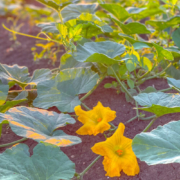
 CanvaPro
CanvaPro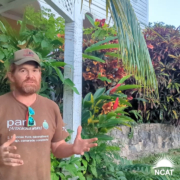
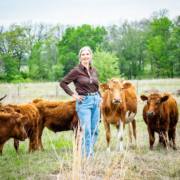
 Canva Pro
Canva Pro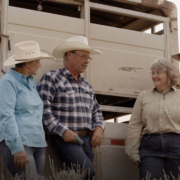
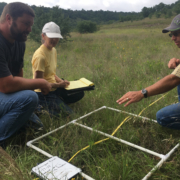
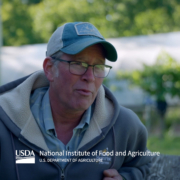
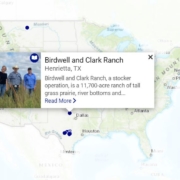

 Canva Pro
Canva Pro